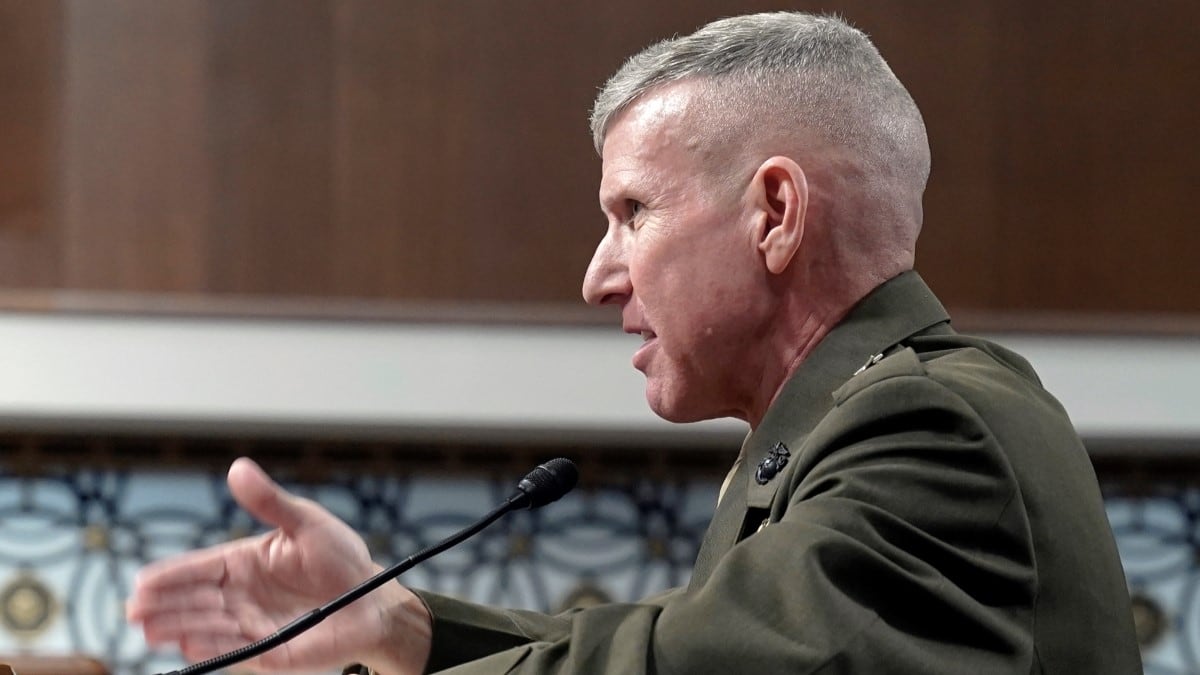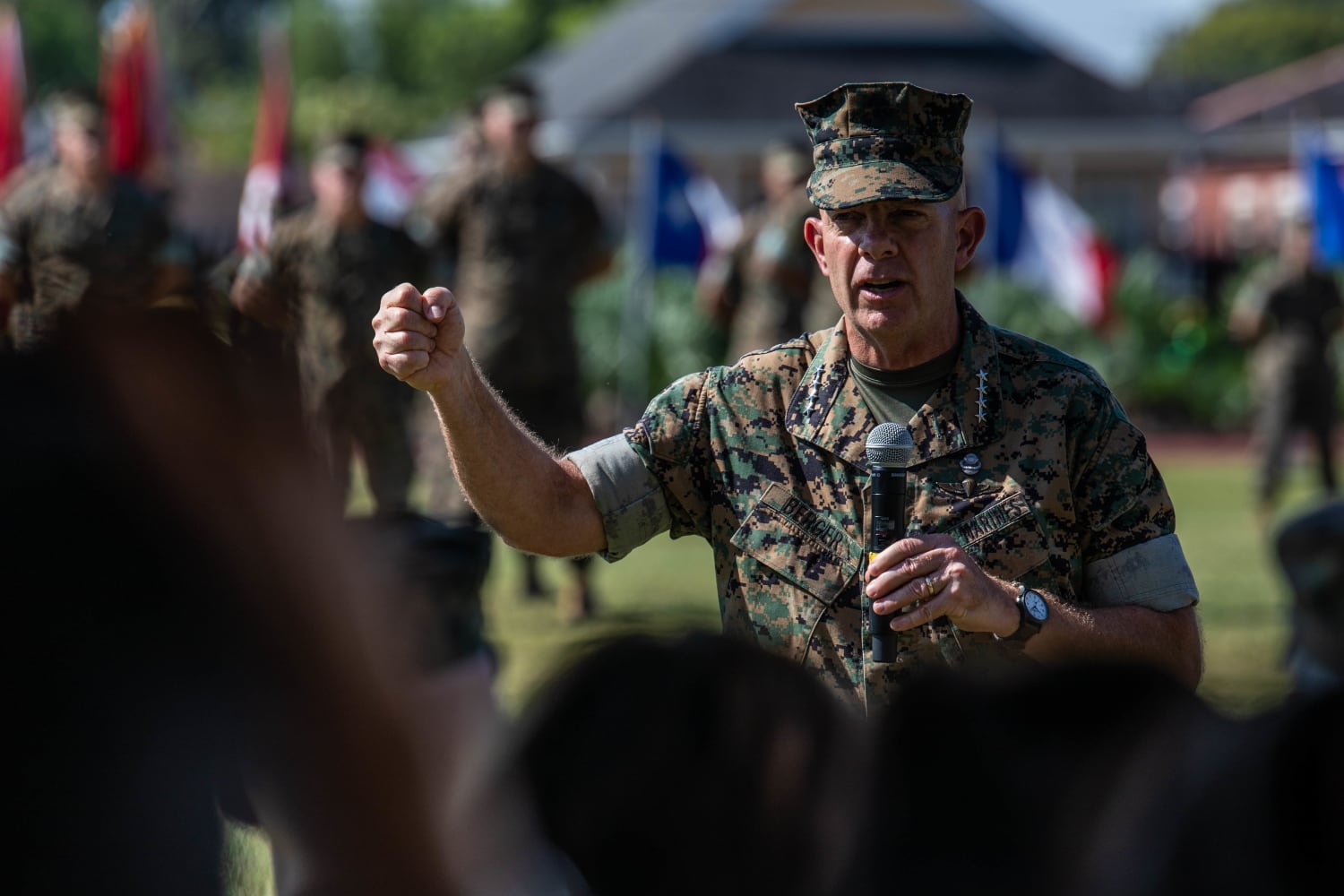The U.S. military branches need to establish a concerted development plan if they hope to effectively modernize, the Marine Corps’ outgoing commandant said during a symposium speech Tuesday morning.
“I think the speed of the joint force and a common goal in the future is what’s lacking right now,” Gen. David Berger said from the exhibition hall of the Walter E. Washington Convention Center in downtown Washington. “And we also don’t have the speed, the velocity to get us there.”
Berger’s address headlined the first day of Modern Day Marine, an annual three-day exposition showcasing the Corps’ latest gadgets and end goals. The commandant, set to retire mid-July, spent much of his speech touting his branch’s progress on Force Design 2030, a sweeping revamping of Marine structure, strategy and capability.
“Marines are leading the joint force in innovation, modernization, and that’s exactly what you would expect Marines to be doing,” Berger said.
RELATED

Berger debuted his new vision for the Marine Corps in March 2020 to a mixture of criticism and celebration.
The plan reimagines the Corps as a trimmed-down, expeditionary force geared for the fast-paced amphibious combat that, U.S. military minds suspect, would be the focal point of a conflict in the Pacific.
Leaders from other branches have echoed Berger’s calls for greater coordination among the joint force: the Army, Navy, Marine Corps, Air Force, Space Force and National Guard.
“The current environment requires the joint force to strengthen and integrate deterrence across domains, theaters, and the spectrum of conflict,” Chairman of the Joint Chiefs of Staff Gen. Mark Milley wrote in the Joint Chief’s 2022 National Military Strategy.
Other military branches have unveiled similar modernization initiatives; for many, improving joint force collaboration is a stated priority.
The Army published an “Army Modernization Strategy” in 2021. The plans detailed in the document are, according to its authors, “interdependent and require corresponding updates to global force posture, facilities, and policies to ensure the Army’s modernization efforts remain synchronized over time and with the rest of the Joint Force.”
The Navy’s 2022 “Navigation Plan”— and its corresponding Force Design 2045 plan — highlighted its plans to coordinate with the Marine Corps on developing littoral combat units and other initiatives to “support Marines in contested areas.”
Future Marine operations will hinge on effective cooperation with assets and teams from the Navy, Berger stressed, as the Corps focuses again on being a “naval force.”
A corollary “Joint Force Design” plan that “says this is where we need to be five, six or seven years into the future,” Berger said, would help facilitate this alignment.
“I think what would help would be a common aim point,” he added. “But I’m not here to judge the other services.”
Jaime Moore-Carrillo is an editorial fellow for Military Times and Defense News. A Boston native, Jaime graduated with degrees in international affairs, history, and Arabic from Georgetown University, where he served as a senior editor for the school's student-run paper, The Hoya.




